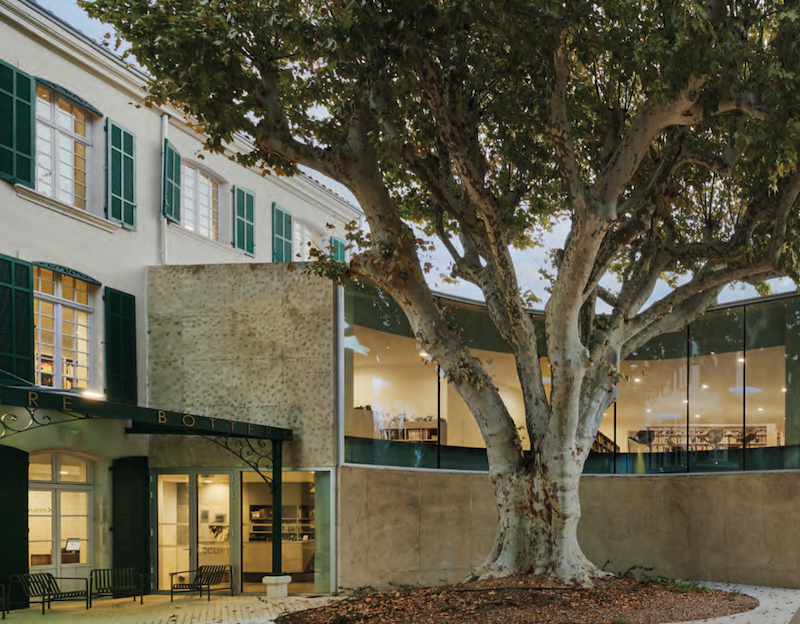Designed by Dominique Coulon & Associés, the new Pierre Bottero media library and public park has been created from a historic “Hôtel particulier” originally built in 1642.
Located in Pélissanne, an ancient fortified city in the heart of Provence, France, the project shifts between two eras and two dimensions: the verticality of the rehabilitated volume of the existing building and the horizontality of the extension. This dialogue is embodied in the contrast between the apparent homogeneity of the facades and the different shades of local materials used, such as ocher and Rognes stone.
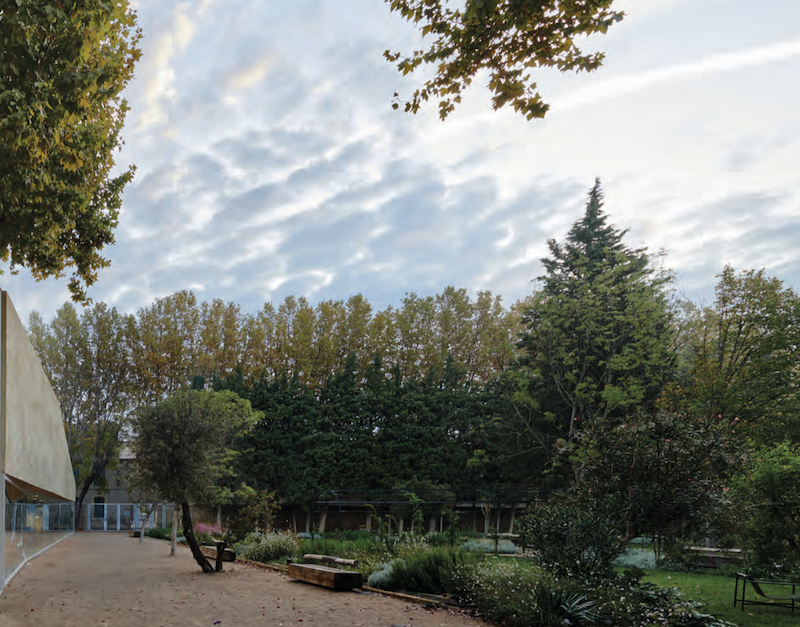
The classical spatial structure of interconnecting rooms was preserved in the existing building, which establishes a simple internal organization of the media library. The extension, meanwhile, displays large, flexible consultation spaces on two floors. The ground level opens widely into the park and allows visitors to immerse themselves in the landscape. The upper level offers a different atmosphere as it propels the visitor into the crown of a plane tree. Preservation efforts guided the curved shape of the extension.
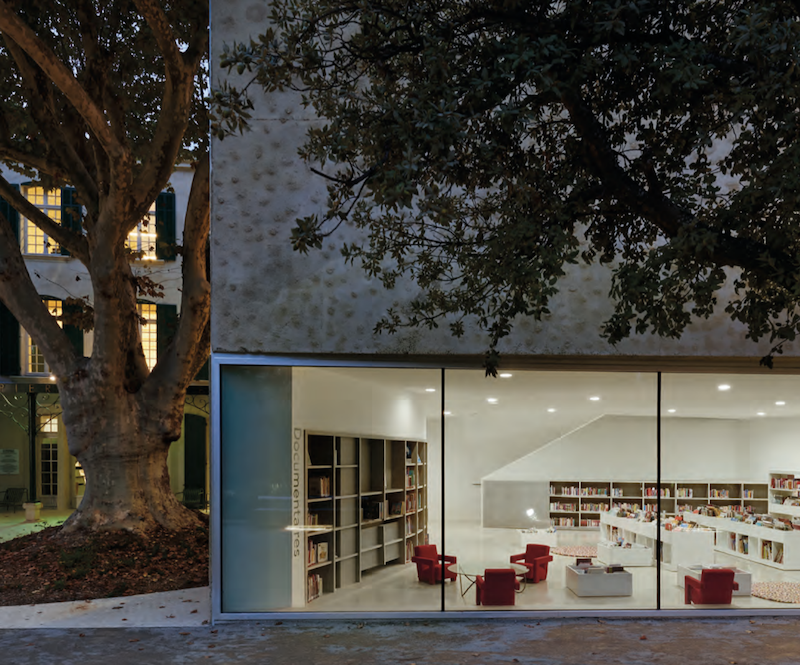
An adjacent building connects the town hall square and the park has been renovated into a passage that links different poles within a global and open urban system. The passage is materialized here by a totally empty space bathed in natural light. The existing floors, doors, and windows were removed and the tiles on the roof were replaced with glass tiles.
The park facade was maintained as is with its semi-circular porte-cochere. On the town hall side, the facade is open over its entire width, framing the park.
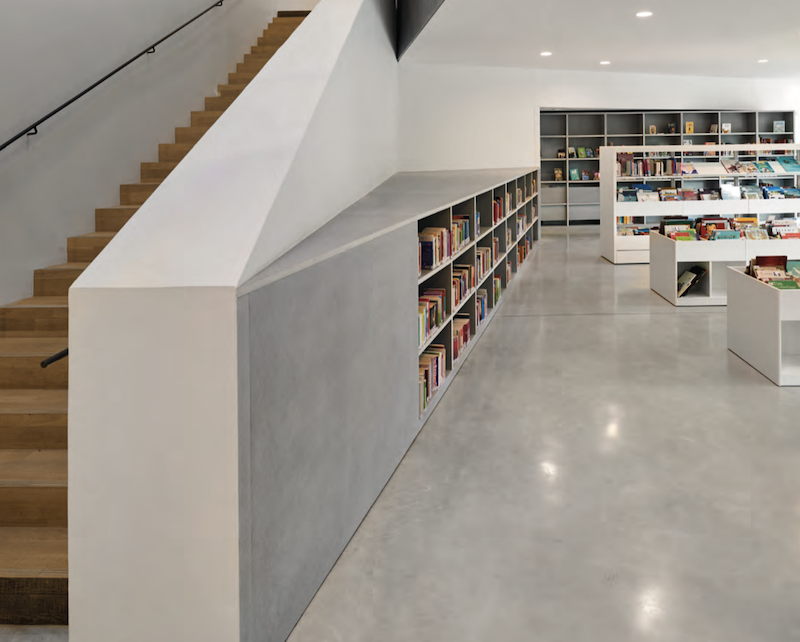

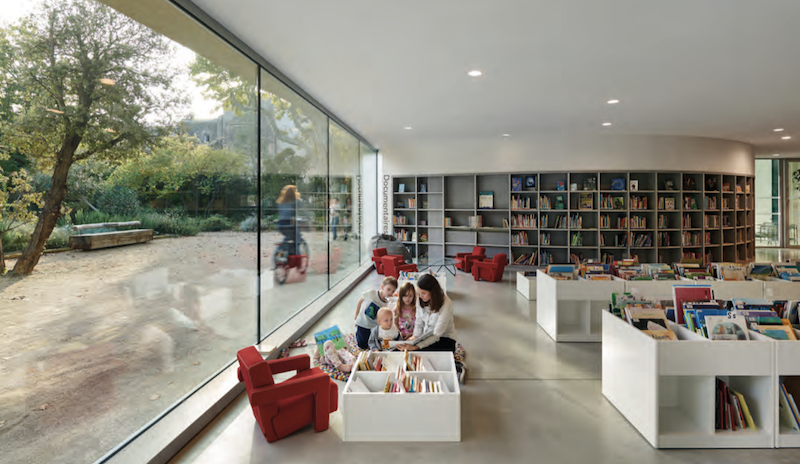
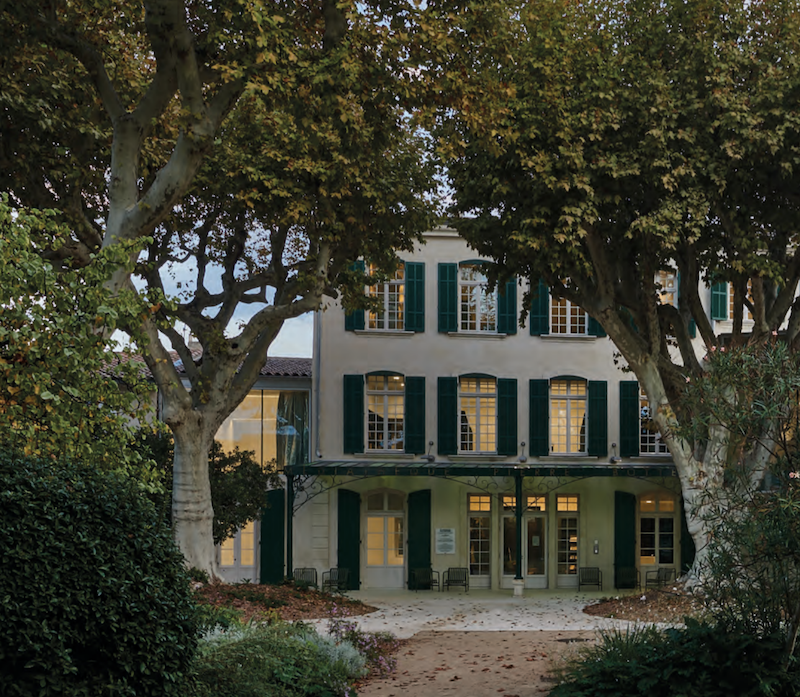
Related Stories
| Jun 9, 2014
Green Building Initiative launches Green Globes for Sustainable Interiors program
The new program focuses exclusively on the sustainable design and construction of interior spaces in nonresidential buildings and can be pursued by both building owners and individual lessees of commercial spaces.
| May 29, 2014
7 cost-effective ways to make U.S. infrastructure more resilient
Moving critical elements to higher ground and designing for longer lifespans are just some of the ways cities and governments can make infrastructure more resilient to natural disasters and climate change, writes Richard Cavallaro, President of Skanska USA Civil.
| May 23, 2014
Top interior design trends: Gensler, HOK, FXFOWLE, Mancini Duffy weigh in
Tech-friendly furniture, “live walls,” sit-stand desks, and circadian lighting are among the emerging trends identified by leading interior designers.
| May 20, 2014
Kinetic Architecture: New book explores innovations in active façades
The book, co-authored by Arup's Russell Fortmeyer, illustrates the various ways architects, consultants, and engineers approach energy and comfort by manipulating air, water, and light through the layers of passive and active building envelope systems.
| May 19, 2014
What can architects learn from nature’s 3.8 billion years of experience?
In a new report, HOK and Biomimicry 3.8 partnered to study how lessons from the temperate broadleaf forest biome, which houses many of the world’s largest population centers, can inform the design of the built environment.
| May 13, 2014
19 industry groups team to promote resilient planning and building materials
The industry associations, with more than 700,000 members generating almost $1 trillion in GDP, have issued a joint statement on resilience, pushing design and building solutions for disaster mitigation.
| May 11, 2014
Final call for entries: 2014 Giants 300 survey
BD+C's 2014 Giants 300 survey forms are due Wednesday, May 21. Survey results will be published in our July 2014 issue. The annual Giants 300 Report ranks the top AEC firms in commercial construction, by revenue.
| May 10, 2014
How your firm can gain an edge on university projects
Top administrators from five major universities describe how they are optimizing value on capital expenditures, financing, and design trends—and how their AEC partners can better serve them and other academic clients.
| May 9, 2014
New York Public Library scraps drastic renovation plans
The New York Public Library's controversial renovation, involving the removal of stacks from the Schwarzman building and the closing of the mid-Manhattan branch, has been dropped in favor of a less dramatic plan.
| Apr 29, 2014
USGBC launches real-time green building data dashboard
The online data visualization resource highlights green building data for each state and Washington, D.C.


